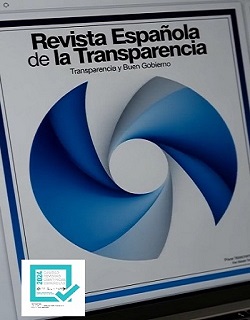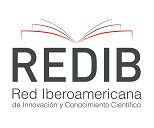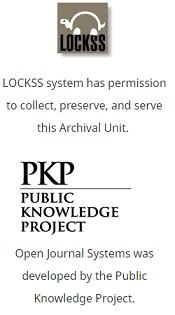Contratación pública, corrupción y gobierno abierto en Colombia
DOI:
https://doi.org/10.51915/ret.386Palabras clave:
Gobierno abierto, Corrupción, Contratación pública, Ciencia de redesResumen
La contratación estatal, como un instrumento para la creación de valor público, debe responder a las demandas ciudadanas mediante prácticas transparentes y participativas. El gobierno abierto es un modelo de gestión medular para lograrlo. Sin embargo, la opaca publicidad y la concentración del poder en ciertas redes de contratación pública frenan ese potencial. Por ello, el análisis de la contratación, de dichas redes y la exploración de cómo la publicidad en el marco del gobierno abierto puede modificar esas dinámicas y generar un impacto positivo, es el propósito de esta investigación. Sirviendo como guía para investigadores en ciencias políticas y jurídicas en la aplicación de la ciencia de redes, se aborda desde el paradigma interdisciplinar de la complejidad, aplicando la teoría sistémica y el análisis de redes basado en la teoría de grafos. Utilizando los datos del sistema de compra pública de un país, se observa la concentración en la obra pública y el “apego preferencial”, y se propone mecanismos para evaluar los cambios estructurales en la red con estrategias de gobierno abierto. Los resultados de esta investigación pueden servir como insumo para diseñar reformas en el sector público que fomenten una contratación más abierta.
Descargas
Estadísticas globales ℹ️
|
0
Visualizaciones
|
0
Descargas
|
|
0
Total
|
|
Citas
ANESSI-PESSINA, E., BARBERA, C., LANGELLA, C., MANES-ROSSI, F., SANCINO, A., SICILIA, M. y STECCOLINI, I. 2020. “Reconsidering public budgeting after the COVID-19 outbreak: key lessons and future challenges”, Journal of Public Budgeting, Accounting and Financial Management, Vol. 32, núm. 5: 957-965.
AROSA, D., ARRIBAS, I. y VILA, J. 2024. “Negative effects on SMEs’ success rates when framework agreements are used in bidding for public contracts”, Public Money and Management, Vol. 45, núm. 1: 53-61.
AVIN, C., DALTROPHE, H. KELLER, B., LOTKER, Z., MATHIEU, C., PELEG, D. y PIGNOLET, Y.A. 2020. “Mixed preferential attachment model: Homophily and minorities in social networks”, Physica A: Statistical Mechanics and its Applications, Vol. 555.
BALANIUK, R., BESSIERE, P. MAZER, E. & COBBE, P. 2013. “Collusion and Corruption Risk Analysis Using Naïve Bayes Classifiers”, Communications in Computer and Information Science, CCIS, núm. 246: 89-100.
BARABASI, A. L., & ALBERT, R. 1999. “Emergence of scaling in random networks”. Science, Vol. 286, núm. 5439: 509–512. https://doi.org/10.1126/science.286.5439.509
BERNARD, T.J. y MANNHEIM, H. 2024. Criminology, Encyclopedia Britannica.
BOJANG, M.B.S. 2022. “Beyond Public Management Theories: The Creation of Public Value Through Co-Production”, Journal of Advanced Research in Economics and Administrative Sciences, Vol. 3, núm. 1: 48–56.
BOLIVAR-GACITÚA, N. 2023. “Colusión en licitaciones públicas (bid rigging) y sus efectos en las compras públicas”, Revista de Derecho Administrativo Económico, núm. 38.
BRYSON, J., SANCINO, A., BENINGTON, J. y SØRENSEN, E. 2017. “Towards a multi-actor theory of public value co-creation”, Public Management Review, Vol. 19, núm. 5.
CARNEIRO, D., VELOSO, P., VENTURA, A., PALUMBO, G. y COSTA, J. 2020. “Network Analysis for Fraud Detection in Portuguese Public Procurement, Lecture Notes” in Computer Science (including subseries Lecture Notes in Artificial Intelligence and Lecture Notes in Bioinformatics), LNCS, Vol. 12490, pp. 390-401.
CASTILLERO-OSTIO, E., MORENO-CABANILLAS, A. y CASTILLO-ESPARCIA, A. 2023. “Transparencia y Gobierno: puertas giratorias en España”, Revista Española de la Transparencia, núm. 18: 201-229.
COVIELLO, D. y GAGLIARDUCCI, S. 2017. “Tenure in office and public procurement”, American Economic Journal: Economic Policy, Vol. 9, núm. 3: 59-105.
CREPAZ, M. y ARIKAN, G. 2024. “The effects of transparency regulation on political trust and perceived corruption: Evidence from a survey experiment”, Regulation and Governance, Vol. 18, núm. 3: 896-913.
DAHBI, K.Y., CHIADMI, D. & LAMHARHAR, H. 2023. “Knowledge Graph based Representation to Extract Value from Open Governement Data An Application to the Public Procurement Domain”, International Journal of Advanced Computer Science and Applications, Vol. 14, núm. 3: 255-262.
DE VAL PARDO, I. 2023. “Creación de valor público-el sistema de gestión”. Encuentros multidisciplinares, núm. 75: 1–7. http://www.encuentros-multidisciplinares.org/revista-75/isabe-del-val.pdf
DELAVALLADE, C. 2006. “Corruption and distribution of public spending in developing countries”, Journal of Economics and Finance, Vol. 30, núm. 2: 222-239.
DIAZ, M.A. & CONTRERAS, F. 2019 ‘Vivienda y corrupción en la España franquista. Una aproximación desde el cine español de los años 50’, en M.A. PEÑA GUERRERO, M. BONAUDO & J.I. ENGELS (EDS.), Historia cultural de la corrupción política : prácticas, escenarios y representaciones contemporáneas, p. 165, Prohistoria Ediciones, Rosario.
DIVIÁK, T., DIJKSTRA, J.K. & SNIJDERS, T.A.B. 2019. “Structure, multiplexity, and centrality in a corruption network: the Czech Rath affair”, Trends in Organized Crime, Vol. 22, núm. 3: 274-297.
FAZEKAS, M., SKUHROVEC, J. & WACHS, J. 2018. “Corruption, Government Turnover, and Public Contracting Market Structure Insights Using Network Analysis and Objective Corruption Proxies”, SSRN Electronic Journal.
FAZEKAS, M. & WACHS, J. 2020. “Corruption and the network structure of public contracting markets across government change”, Politics and Governance, Vol. 8, núm. 2: 2183-2463.
FERWERDA, J., DELEANU, I. & UNGER, B. 2017. “Corruption in Public Procurement: Finding the Right Indicators”, European Journal on Criminal Policy and Research, Vol. 23. núm. 2: 245-267.
FONTANELLI ESPINOZA, O., MANSILLA CORONA, R.L. & MIRAMONTES VIDAL, P.E. 2020. “Distribuciones de probabilidad en las ciencias de la complejidad: una perspectiva contemporánea”, INTER DISCIPLINA, Vol. 8, núm. 22: 11-37.
FOUNTOUKIDIS, I.G., ANTONIOU, I.E. & VARSAKELIS, N.C. 2023. “Competitive conditions in the public procurement markets: an investigation with network analysis”, Journal of Industrial and Business Economics, Vol. 50, núm 2: 347-368.
FREEMAN, L.C. 1978. “Centrality in social networks conceptual clarification”, Social Networks, Vol. 1, núm. 3: 215–239.
GAMPER, M. 2022. “Social Network Theories: An Overview”, in KLÄRNER, A et al. (eds), Social Networks and Health Inequalities, pp. 35-48.
GAO, Y. & JANSSEN, M. 2020. “Generating Value from Government Data Using AI: An Exploratory Study”, Lecture Notes in Computer Science (including subseries Lecture Notes in Artificial Intelligence and Lecture Notes in Bioinformatics), Vol. 12219 LNCS.
GÓMEZ, D.J. 2018. “Redes de corrupción política: Una revisión para el caso colombiano”, Análisis Político, Vol. 31, núm. 92: 180-201.
GONZALEZ VASQUEZ, F.J. & FERNANDEZ KETTYL, J.L. 2019. “Estrategia Para Ejercer Un Mejor Control Fiscal En Los Contratos Estatales Con Aplicación Al Control Previo”, Derectum, Vol. 4, núm. 2.
GRANADOS, OSCAR M. 2021. “Corruption Networks: An introduction”. In Corruption Networks. pp. 1–8. Springer. https://doi.org/10.1007/978-3-030-81484-7_1
GRINBERG, D. 2023. “An introduction to graph theory”, arXiv.org, 1–422.
GUPTA, S., MELLO, L. DE & SHARAN, R. 2001. “Corruption and military spending”, European Journal of Political Economy, Vol. 17, núm. 4: 749-777.
HERNÁNDEZ VELÁZQUEZ, A.C. 2021. “Contrataciones Públicas Centralizadas. El tránsito de instrumentos de eficacia y eficiencia a instrumentos anti-corrupción.”, Encrucijada, Revista Electrónica del Centro de Estudios en Administración Pública, núm. 38: 127–150.
HUDON, P.A. & GARZÓN, C. 2016. “Corruption in public procurement: entrepreneurial coalition building”, Crime, Law and Social Change, Vol. 66, núm. 3: 291–311.
IBRAHIM, J., LOCH, C. & SENGUPTA, K. 2022. “Corruption in Large Government Projects Not Only Inflates the Budget But Reduces Managerial Effectiveness”, in LEE, H., ERNST, R., HUCHZERMEIER, A. & CUI, S. Creating Values With Operation and Analytics. Springer Series in Supply Chain Management, Vol. 19.
JANCSICS, D. & JÁVOR, I. 2012. “Corrupt Governmental Networks”, International Public Management Journal, Vol. 15, núm. 1: 62-99.
JORRITSMA, J. & KOMJÁTHY, J. 2020. “Weighted distances in scale-free preferential attachment models”, Random Structures and Algorithms, Vol. 57, núm. 3: 1082-1109
KAMADA, T. & KAWAI, S. 1989. “An algorithm for drawing general undirected graphs”, Information Processing Letters, Vol. 31, núm. 1: 7-15.
KAMGUIA, B., NDJAKWA, M. & TADADJEU, S. 2023. “Does infrastructural development foster export upgrading in Africa?”, African Development Review, Vol. 35, núm. 1: 1-16.
KHERBASH, O. & MOCAN, M.L. 2015. “A Review of Logistics and Transport Sector as a Factor of Globalization”, Procedia Economics and Finance, Vol. 27: 42-47.
LABBÉ FIGUEROA, M.F. 2023. “Remedios para la colusión por algoritmos de fijación de precios”, Revista Chilena de Derecho y Tecnología, Vol. 12: 1-17.
LARSEN, J.K., SHEN, G.Q., LINDHARD, S.M. & BRUNOE, T.D. 2016. “Factors Affecting Schedule Delay, Cost Overrun, and Quality Level in Public Construction Projects”, Journal of Management in Engineering, Vol. 32, núm. 1: 04015032.
LUNA-PLA, I. & NICOLÁS-CARLOCK, J.R. 2020. “Corruption and complexity: a scientific framework for the analysis of corruption networks”, Applied Network Science, Vol 5. núm. 13: 1-18.
MALAMUD, C., TAUBERER, J., LESSIG, LARRY, O’REILLY, T., HOLOVATY, A., O’NEIL, D.X., MIGURSKI, M., ALLEN, S., LESSIG, LAWRENCE, NEWMAN, D., GERACI, J., BENDER, E., STEINBERG, T., MOORE, D., SHAW, D., NEEDHAM, J., HARDI, J., ZUCKERMAN, E., PALMER, G., TAYLOR, J., HOROWITZ, B., EXLEY, Z., FOGEL, K., DALE, M., HALL, J.L., HOFMANN, M., ORBAN, D., FITZPATRICK, W. & SWARTZ, A. 2016. The 8 Principles of Open Government Data (OpenGovData.org), opengovdata.org.
MALYNIAK, B., MARTYNIUK, O. & KYRYLENKO, O. 2019. “Corruption and efficiency of public spending in states with various public management types”, Economic Annals-XXI, núm. 178: 7–8.
MALYNIAK, B.S., MARTYNIUK, O.M. & KYRYLENKO, O.P. 2019. “The impact of corruption on the efficiency of public spending across countries with different levels of democracy”, Financial and credit activity problems of theory and practice, Vol. 1, núm. 28: 290-301.
MAURO, P. 1998. “Corruption and the composition of government expenditure", Journal of Public Economics, Vol. 69, núm. 2: 263-279.
MELO-BECERRA, L.A., RAMOS-FORERO, J.E. & GÓMEZ, C. 2022. “El presupuesto general de la nación: una aproximación a las partidas de transferencias e inversión”, Revista Desarrollo y Sociedad, Vol. 1 núm. 90: 153-206.
MICHETTI, E., BRIANZONI, S. & COPPIER, R. 2011. “Complex dynamics in a growth model with corruption in public procurement”, Discrete Dynamics in Nature and Society, 2011: 1-27.
MORENO MONTES DE OCA, B. 2020. “El derecho de acceso a la información pública generada en la contratación pública”, Revista Española de la Transparencia, Vol.2 núm. 11: 135-155.
MORENO-JAIMES, C. 2007, “Gasto público y elecciones: una explicación política de la asignación de los presupuestos municipales en México”, Foro Internacional, Vol. 47, núm. 2: 408-434.
MUNGIU-PIPPIDI, A. 2017. “The time has come for evidence-based anticorruption, Nature Human Behaviour”, Vol. 1, núm. 11.
MUNGIU-PIPPIDI, A. 2018. “Seven steps to control of corruption: The road map”, Daedalus, Vol. 147, núm. 3: 20-34.
MUÑOZ, J.F. & ESTEBAN, G. 2015. “Using the semantic web for the integration and publication of public procurement data”, Lecture Notes in Computer Science (including subseries Lecture Notes in Artificial Intelligence and Lecture Notes in Bioinformatics), vol. 9265.
NEWMAN, M.E.J., 2003. “The Structure and Function of Complex Networks”, Society for Industrial and Applied Mathematics, Vol. 45, núm. 2: 167–256.
NICOLÁS-CARLOCK, J. R. & LUNA-PLA, I. 2021. “Corruptomics”. In GRANADOS, OSCAR, M. Corruption Networks. pp. 153-158). Springer. https://doi.org/10.1007/978-3-030-81484-7_9
OBWEGESER, N. & MÜLLER, S.D. 2018. “Innovation and public procurement: Terminology, concepts, and applications”, Technovation, núm. 74–75: 1-17.
OKAMOTO, K. 2017. “Introducing Open Government Data”, Reference Librarian, Vol. 58, núm. 2: 111-123.
OSPINA, G., 2016. “The role of secondary and tertiary roads in the development of Colombia”, Revista de ingeniería, núm. 44: 20–27.
OSSA BOCANEGRA, C.E. 2022. “Tratamiento de la colusión en la contratación pública: una visión del caso colombiano”, Revista de Derecho Uninorte, núm. 42: 233-263.
PALMA, E.J.B. & GARCÍA RODRÍGUEZ, M.J. 2024. “El uso de la IA generativa en la contratación pública para detectar prácticas irregulares”, Revista Auditoria Pública, núm. 83: 83–92.
PURWANTO, A., JANSSEN, M. & ZUIDERWIJK, A. 2017. “Towards an open government data success model: A case study from Indonesia”, Proceedings of the European Conference on e-Government, ECEG, vol. Part F129463.
PURWANTO, A., ZUIDERWIJK, A. & JANSSEN, M. 2020. “Citizens Trust in Open Government Data: A Quantitative Study about the Effects of Data Quality”, System Quality and Service Quality, The 21st Annual International Conference on Digital Government Research, vol. 20.
RAZQUIN LIZARRAGA, M. M. 2019. “Los principios de la contratación pública en la Unión Europea y España The principles of public procurement in the European Union and Spain”, Revista De Derecho Administrativo -RDA, núm. 18: 303–321.
REALP, M. 2020. “La lucha contra la colusión en la contratación pública”, Revista Economía industrial, núm. 415: 49–57.
REÁTEGUI-SÁNCHEZ, J. 2021. “LP Pasión por el derecho, Lo que debes saber sobre el delito de colusión (artículo 397 del CP)”. Recuperado de https://lpderecho.pe/delito-colusion-articulo-397-codigo-penal/.
REIS, P.R.D.C. & CABRAL, S. 2018. “Para além dos preços contratados: Fatores determinantes da celeridade nas entregas de compras públicas eletrônicas”, Revista de Administracao Publica, Vol. 52, núm. 1: 107-125.
SAADAOUI MALLEK, R., AWAD, A., OZTURK, I. & DOUISSA, I. BEN. 2024. “Infrastructure development and poverty eradication in sub-Saharan Africa; Its effect and transmission channels”, Cities, Vol. 144.
SAENZ PINZON, G.P. 2017. “Bosquejo de una propuesta de presupuesto participativo para los municipios de Colombia”, Administración & Desarrollo, Vol. 47, núm. 2: 110-135.
SAMARGHANDI, H., TABATABAEI, S.M.M., TAABAYAN, P., HASHEMI, A.M. & WILLOUGHBY, K. 2016. “Studying the reasons for delay and cost overrun in construction projects: The case of Iran”, Journal of Construction in Developing Countries, Vol. 21, núm. 1:51-84.
SANTOS, H.C.Z.A. & FRAGA, G.J. 2020. “Corrupción, estructura productiva y desarrollo económico en los países en desarrollo”, Cepal Review, núm. 130: 65-89.
SCHWARTZ, G., FOUAD, M., HANSEN, T.S., VERDIER, G. & INTERNATIONAL MONETARY FUND. 2020. Well, spent: how strong infrastructure governance can end waste in public investment. Washington, D.C.: INTERNATIONAL MONETARY DUND. https://doi.org/10.5089/9781513511818.071
SCOTT, J. & STOKMAN, F.N. 2015. “SOCIAL NETWORKS”, International Encyclopedia of the Social & Behavioral Sciences: Second Edition, pp. 473–477, Elsevier Inc.
SCUPOLA, A. & MERGEL, I. 2022. “Co-production in digital transformation of public administration and public value creation: The case of Denmark”, Government Information Quarterly, Vol. 39, núm 1: 101650. https://doi.org/10.1016/j.giq.2021.101650
SENJAK PEJIĆ, M., TERZIĆ, M., STANOJEVIĆ, D., PEŠKO, I. & MUČENSKI, V. 2023. “Improving construction projects and reducing risk by using artificial intelligence”, Social informatics journal, Vol. 2, núm. 1: 33–40.
SORNETTE, D. 2007. “Probability Distributions in Complex Systems”. arXiv. https://arxiv.org/abs/0707.2194.
SWALEHEEN, M., ALI, M.S. BEN & TEMIMI, A. 2019. “Corruption and public spending on education and health”, Applied Economics Letters, Vol. 26, núm. 4: 321-325.
TANZI, V. & DAVOODI, H. 1998. “Roads to Nowhere: How Corruption in Public Investment Hurts Growth”, Washington, D.C: INTERNATIONAL MONETARY FUND, núm. 12.
TAVERA CORTÉS, M.E., TORRES SANDOVAL, A.J. & SANDOVAL GÓMEZ, R.J. 2024. “Asignación eficiente del presupuesto en México”, RIDE Revista Iberoamericana para la Investigación y el Desarrollo Educativo, Vol. 14, núm. 28. doi: 10.23913/ride.v14i28.1764.
TORFING, J. & SØRENSEN, E. 2019. “Interactive political leadership in theory and practice: how elected politicians may benefit from co-creating public value outcomes”, Administrative Sciences, Vol. 9, núm. 3: 51. doi: 10.3390/admsci9030051
UREÑA-CARRIÓN, J., KARIMI, F., ÍÑIGUEZ, G. & KIVELÄ, M. 2023. “Assortative and preferential attachment lead to core-periphery networks”, Physical Review Research, Vol. 5, núm. 4: 043287.
UTZ, S. & JANKOWSKI, J. 2016, “Making “Friends” in a Virtual World: The Role of Preferential Attachment, Homophily, and Status”, Social Science Computer Review, Vol. 34, núm. 5: 546-566. doi: 10.1177/0894439315605476
VAL PARDO, I. DE, 2023, “Creación de valor público-el sistema de gestión”, Encuentros multidisciplinares, Vol. 25, núm. 75: 1–7.
VALENCIA, L.D.V. 2020. “Captura del Estado, macrocriminalidad y derechos humanos”, 1st ed., México: Flacso.
VÁZQUEZ VALENCIA, L.D., ESPINAL, J., ISUNZA, E. & ISUNZA, A. 2023. “Las estructuras políticas en las redes de macrocriminalidad en México”, Redes. Revista hispana para el análisis de redes sociales, Vol 34, núm. 1: 31-48.
VELASCO, R.B., CARPANESE, I., INTERIAN, R., PAULO NETO, O.C.G. & RIBEIRO, C.C. 2021. “A decision support system for fraud detection in public procurement”, International Transactions in Operational Research, Vol. 28, núm. 1: 27-47.
VILLAMIL, I., KERTÉSZ, J. & FAZEKAS, M. 2024. “Collusion risk in corporate networks”, Scientific Reports, Vol. 14: 3161-3170.
VOITALOV, I., HOORN, P. VAN DER, HOFSTAD, R. VAN DER & KRIOUKOV, D. 2019. “Scale-free networks well done”, American Physical Society, Vol. 1, núm. 3: 033034.
WANG, M., YU, G. & YU, D. 2008. “Measuring the preferential attachment mechanism in citation networks”, Physica A: Statistical Mechanics and its Applications, Vol. 387, núm. 18: 4692-4698.
WAXENECKER, H. & PRELL, C. 2024. “Corruption dynamics in public procurement: A longitudinal network analysis of local construction contracts in Guatemala”, Social Networks, núm. 79: 154–167.
WEERAKKODY, V., IRANI, Z., KAPOOR, K., SIVARAJAH, U. & DWIVEDI, Y.K. 2017. “Open data and its usability: an empirical view from the Citizen’s perspective’, Information Systems Frontiers, Vol. 19, núm. 2: 285-300.
YANG, T.M. & WU, M.C. 2022. “Exploring the Factors Influencing Government Agencies’ Intention to Implement Open Data Policies in Taiwan: A Quantitative and Multigroup Analysis Perspective”, Journal of Library and Information Studies, Vol. 20, núm. 1: 131 – 171.
YUHUI, S. 2021. “El cáncer de la corrupción en Latinoamérica: El caso Odebrecht”, Gestión y Política Pública, Vol. 30, núm. 3: 237–265.
ZUEV, K., BOGUÑÁ, M., BIANCONI, G. & KRIOUKOV, D. 2015. “Emergence of soft communities from geometric preferential attachment”, Scientific Reports, núm. 5: 9421.
Descargas
Publicado
Cómo citar
Número
Sección
Licencia
Derechos de autor 2025 Revista Española de la Transparencia

Esta obra está bajo una licencia internacional Creative Commons Atribución-CompartirIgual 4.0.
La Revista Española de la Transparencia apuesta por el acceso gratuito y uso sin restricciones a su información y recursos digitales. La política de acceso abierto se materializa en:
- Acceso gratuito, libre y universal.
- Los autores y la Revista conceden a cualquier usuario potencial el derecho a utilizar, copiar o distribuir el contenido de manera ilimitada e irrevocable, con la única condición de reconocer la autoría.
- Los documentos electrónicos correspondientes al contenido de la Revista se incluyen en formato digital para permitir su acceso libre.

















